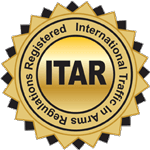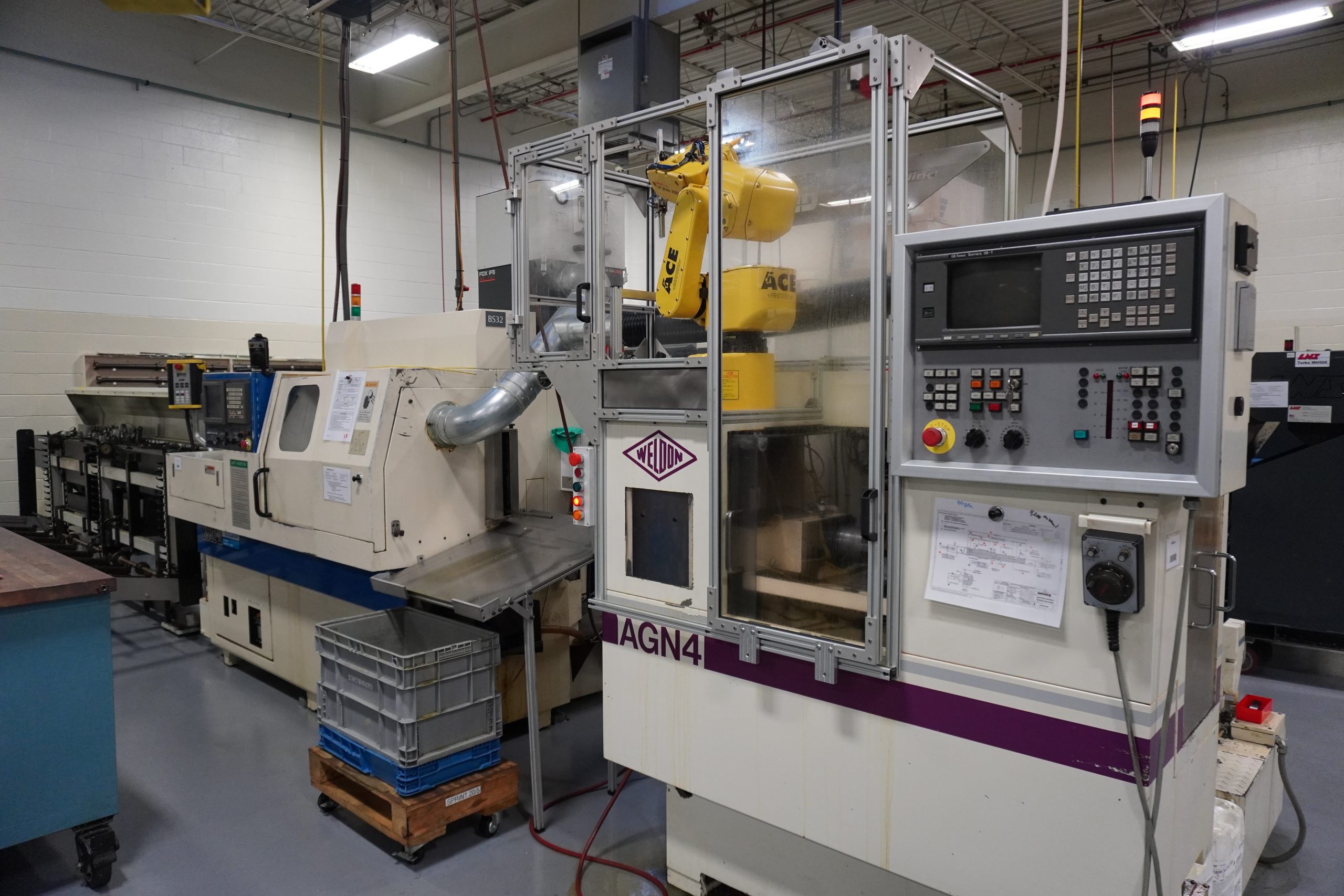As technology becomes ever more accessible, automated manufacturing has also evolved. In the past, many workers saw automation as a threat and saw automated machinery replacing humans in factories. These sentiments were not without merit, as automated manufacturing solutions introduced in the 1980s included the rapid introduction of industrial robots that led to manufacturing job losses. However, replacing workers is no longer the primary goal of automation, which has largely shifted from hardware like robotics to automated manufacturing software solutions or a combination of the two.
This includes software tools that support automated manufacturing within industrial management systems, including software that supports inventory management and supply chains. Additionally, there’s software that runs automated equipment like CNC machines, industrial robots, and other automated manufacturing hardware. Today’s automated manufacturing solutions go further than the automation used in factories decades ago, extending to production software instructing industrial equipment on what to do and how to do it.
Modern Automated Manufacturing Solutions
Automated manufacturing has numerous benefits, combining production management software with hardware to fabricate physical products. Together, they automate assembly, inspection, inventory management, production planning, and other processes. Technology has improved manufacturer productivity, and automated manufacturing solutions are becoming increasingly versatile rather than simply performing specialized tasks.
Automated manufacturing solutions include those that handle:
- Logistics
- Operations
- Processing orders
- Procurement
- Production
While many of these types of automation don’t directly involve production, software that assists in processing orders and logistics has allowed many manufacturers to perform smaller production runs for SMEs and even directly supply to consumers. Software that directly deals with production and operations is improving aspects like workflow, managing component inventories, handling production bottlenecks, and assisting with decisions.
6 Benefits of Automated Manufacturing Solutions
Advanced technology is essential to CNC machines that operate drills, lathes, mills, and other automated tools through CAM (computer-aided manufacturing) software. Additionally, CAD (computer-aided design) software is used to develop the workpieces that CNC machines produce. These programmable machines perform various operations based on the specifications for which they’re programmed.
Automated manufacturing allows CNC machine operators to control the following:
- Productivity: As it’s capable of performing actions precisely, waste is reduced during the machining process, reducing overall production expenses; without the need for direct human involvement, production can take place continuously without affecting product quality.
- Speed: CNC machines are far more efficient than manual machining techniques by enabling multiple operations simultaneously.
- Uniformity: Precise machining ensures repeatable processes that lead to uniformity, which is critical when making complex components for industries like aerospace or healthcare.
- Volume: Production increases with CNC machines that continuously produce identical products repeatedly while eliminating human-made errors.
In addition to these advances, programmable CNC machines are much safer for operators than manually machining parts. Additionally, one operator can oversee several machines simultaneously, significantly reducing labor costs.
Here are six of the many benefits automated manufacturing provides:
1. Efficient and Cost-Effective
Efficiency is a critical factor in the success of any business. Modern production software enables CNC machine operators to schedule tasks and utilize data to save time and effort, leading to much quicker turnaround times. This is particularly true when a workpiece requires numerous machining changes.
Automated manufacturing solutions that include CNC machining:
- Allow CNC machines to work with aluminum, brass, stainless steel, and other alloys.
- Increase productivity by negating the need for human intervention when reorienting a workpiece.
- Reduce the time it takes to set up, enabling work to occur on multiple surfaces simultaneously.
- Save time by enabling quicker and easier head positioning when drilling holes.
By reducing the need for multiple setups, CNC machining allows cutting tools to access the workpiece from different angles without the need to remove and set it up again. Using the surface on which the workpiece is placed, operators can position it to enable quicker production without forfeiting quality or accuracy.
2. Allows for More Complex Designs
The fabrication of complex components is a crucial aspect of why CNC machining replaces options with fewer axes. 3-axis machining and other processes like 3D printing aren’t well-suited for making complex parts. The additional range of motion and ability to better position both cutting tools and workpieces allows manufacturers to make more intricately designed parts, which would be much more difficult, or even impossible, to achieve using more conventional methods. It also means fewer machine tools are needed during production. This, in turn, adds to efficiency when working on more complicated projects.
CNC machining enables:
- Better surface finishing, which decreases the need for polishing.
- Even cutting angles along convex edges.
- Consistently smooth curves on workpiece surfaces.
- Detailed machining on curved workpieces.
- Faultlessly made curved components like airplane fins or wind turbine blades.
- Higher quality molds as it allows tools to form deeper cavities quickly and precisely, as well as provide better surface finishes.
- Positioning of cutting tools closer to the workpiece.
The shorter cutting tools used in CNC machining lengthen the tools’ life cycles while allowing for tighter tolerances.
Ready to automate your next job?
VIEW OUR EQUIPMENT3. Improved Quality Control
Automated manufacturing technology can significantly benefit a manufacturer’s quality control measures, traditionally where humans have been seen as superior to machines. While oversight by human inspectors is unlikely to disappear soon, automated manufacturing solutions that include two- and three-dimensional vision systems are being incorporated into production lines. Modern visual technology isn’t affected by fatigue or human error and, in many cases, can provide better-quality – and more consistent – results when looking at the color, size, shape, and other details like labels or product codes.
Not only does this vision technology make end products more reliable and safer, but it also largely eliminates the need for manual data entry when doing quality checks. Integrating custom automated manufacturing solutions gives manufacturers access to real-time data and insights that allow manufacturers to optimize production further. By recording general quality targets, along with results of inspections and inventory tracking, automated manufacturing technology also helps with record-keeping.
4. Better Safety and Lowered Risk
Safety is an essential factor in any industrial environment. Automated manufacturing solutions improve safety standards and mitigate risk, as machines are generally used to perform the most dangerous tasks. Modern CNC machines will often notify their operator when requiring maintenance, sometimes even providing specific information on what’s wrong. By constantly monitoring efficiency in real-time, there’s less chance of unplanned downtime or an accident due to poorly performing equipment. Many automated solutions utilize Internet of Things (IoT) sensors and other devices that allow them to “see” and safely work around human personnel.
5. Lower Labor Costs
While today’s automated manufacturing solutions aren’t geared toward replacing human workers, they still lessen the need for manual labor, thus reducing costs. In the case of CNC machining, eliminating multiple setups and making operations speedier decreases the number of tasks a machine operator is required to do for a project. The faster the project is completed, the fewer hours a manufacturer must pay employees. Yet this needn’t be looked at as another example of machines replacing humans but rather as a means to free up human resources to make a manufacturer’s operations more productive. A manufacturer can produce more, invest in research and development, or allocate resources to advance business opportunities.
6. Respond in Real-Time
While real-time data can contribute to a less dangerous work environment for humans, it can also provide manufacturers with the critical information they need to make production more efficient. This includes ordering raw materials needed for production once stock levels reach a certain point, enabling a manufacturer to fulfill orders more efficiently. Real-time project updates also allow decisions to be made during production without restarting the project from scratch. Using innovative technology and automated manufacturing software to evaluate real-time production data, it’s possible to perform a more comprehensive array of tasks more efficiently.
Ready to talk about your next project?
CONTACT US TODAYChoosing an Automated Manufacturing Provider
While most people think automated manufacturing solutions are all about machines, it still takes trained engineers and other specialists to run them. Staub Precision Machine, Inc. uses an in-house team of automation specialists and engineers to produce the highest quality components. Using automated manufacturing techniques that we’ve developed since our company’s inception, Staub seeks to provide a direct line of communication between our engineering team and our customers. To learn more about how Staub can become a customer partner and provide the most cutting-edge automated manufacturing solutions, we invite you to contact the experts at Staub Precision Machine today.



